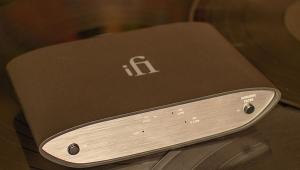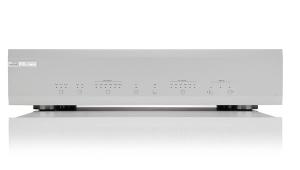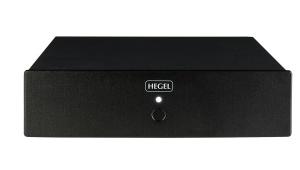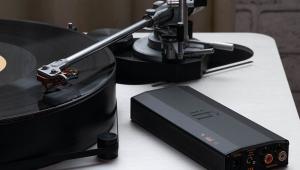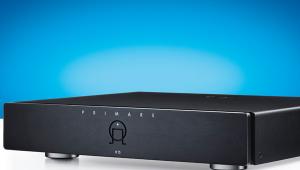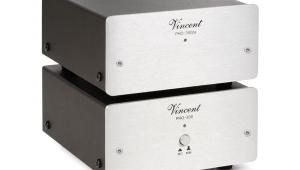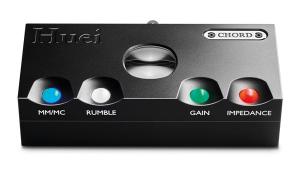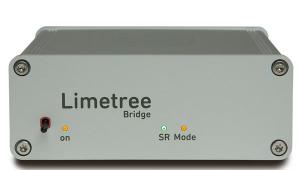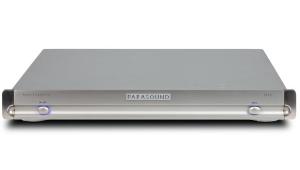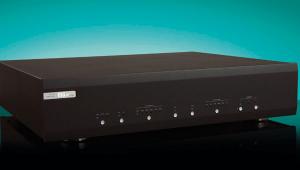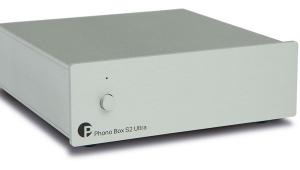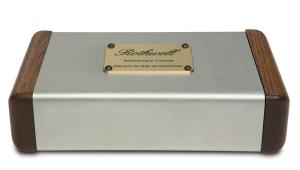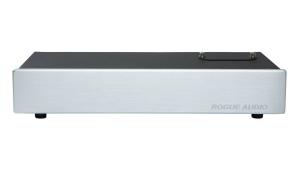Rega Aura
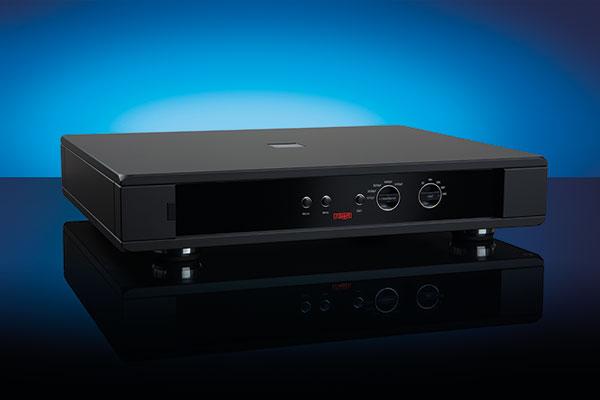
 It won’t have gone unnoticed by audiophiles that Rega has been keeping itself exceedingly busy over the last few years, with an impressive stream of product introductions, updates and relaunches grabbing the headlines – many of which have been HFC exclusives. With so many of the products of late designed to appeal to the entry-level and mid-market, it’s easy to forget that the company has also made remarkable advances into rather more rarefied high-end areas as well. The launch of its Reference series in 2009 saw the introduction of the Isis CD player and Osiris integrated amplifier (HFC 329) – both now priced at £6,399 – and marked the start of a high-end series of components that has culminated in the custom-made Naiad turntable, which brings together company co-founder Roy Gandy’s 40 years of turntable experience and is built in tiny numbers at £29,999 a time.
It won’t have gone unnoticed by audiophiles that Rega has been keeping itself exceedingly busy over the last few years, with an impressive stream of product introductions, updates and relaunches grabbing the headlines – many of which have been HFC exclusives. With so many of the products of late designed to appeal to the entry-level and mid-market, it’s easy to forget that the company has also made remarkable advances into rather more rarefied high-end areas as well. The launch of its Reference series in 2009 saw the introduction of the Isis CD player and Osiris integrated amplifier (HFC 329) – both now priced at £6,399 – and marked the start of a high-end series of components that has culminated in the custom-made Naiad turntable, which brings together company co-founder Roy Gandy’s 40 years of turntable experience and is built in tiny numbers at £29,999 a time.
Unique to Rega’s integrated amplifiers, the flagship Osiris has no phono stage built in and requires a dedicated design for use with a turntable. Initially the role was taken on by the Ios MM/MC phono stage – which went on to become the Ios Reference in 2009 – although both are now discontinued.
The Aura is a new Reference series moving-coil-only design and at £3,999 represents everything the company knows about designing a phono stage. Inside the impressively hefty box, the circuit it is built around uses some established Rega design practises with a fully symmetrical design that makes use of a pair of specialised FETs (Field Effect Transistors) configured as a matched compound pair. These transistors are derived from the aerospace sector and this application ensures that they are automatically pair matched. The benefit of these components is that they significantly reduce the presence of bias currents in the cartridge coil – something that Gandy feels is detrimental to overall performance.
They don’t eliminate the bias current completely, though, which is why this is partnered with a servo circuit that acts upon any remaining traces to reduce them to zero. A Class A gain stage then provides the required boost to the signal and is a very considerable boost, too. The Aura has two gain settings of 63.5 and 69.5dB selected via a selector on the front panel, and the higher setting in particular should ensure that even low-output cartridges or low-power amplifiers can be accommodated.
The final stage of the Aura acts to invert the signal and provide an output for the balanced outputs that are available alongside the RCA connections. The nature of the Aura’s circuit means that even via RCA connections, it is a ‘balanced’ circuit – but XLRs are available if you wish.
This circuit is matched with a power supply that Rega quotes as being able to deliver current 60 percent above that which is required. This is done to maximise gain and dynamic range while reducing noise. To ensure that the power supply doesn’t introduce unwelcome noise, a dedicated supply is used for each stage of the Aura and extensive smoothing arrangements are in place throughout.
As it is designed to partner the Osiris integrated amplifier, the Aura sports the company’s substantial Reference casework. This comprises huge metal sections that play their part in its weight of 13kg. The front panel provides adjustment for capacitance and resistance loading that can be altered on the fly, along with the gain selector, a mute function and a useful mono facility to allow for the optimal reproduction of a mono record with stereo equipment.Aesthetics are a subjective area, but I am a fan of what Rega has done here, and the Aura looks and feels special without being tricky to accommodate. I particularly like the inclusion of a good-quality RCA interconnect and mains cable because it effectively heads off any neuroses about appropriate partnering accessories, although inveterate tweakers may tend to disagree.
The end result of Rega’s engineering fastidiousness is that the Aura phono stage is almost supernaturally quiet. I have spent several years with a Cyrus Phono Signature phono stage (HFC 408) as part of my vinyl replay system and have always reckoned it to be very quiet indeed, but the Aura is in a different league all together.
Sound quality
The advantage of an ultra-low noise level is that the audio signal from whatever your choice of moving-magnet cartridge may be is handled with a backdrop of absolute silence and delivered with startlingly vivid results. Initially connected to a Michell Gyrodec, SME M2-9 and van den Hul DDT-II cartridge (HFC 425), the effect this has on playing LPs that I think I know very well is profound. Happiness Is Easy from Talk Talk’s The Colour Of Spring is revelatory as the children’s choir becomes a set of individually discernible voices within a clearly perceivable space. The extraordinary bass noise in the second verse leaps out of the mix, as tangible as if you made it yourself.There is an immediacy to everything that the Rega does that makes for an exceptionally vivid listening experience. This is not tied to the speed of the material you are listening to. The almost processional pace of Dionysus by Dead Can Dance, is still delivered with incredible vibrancy and a lightness of touch to tiny instrumental details that ensures they are startlingly lifelike. At one point, there is the bleating sound of a flock of sheep and the Aura renders it in such a way as to make me look out of the window to confirm there aren’t actually any converging outside my front door.
Listening over a period of several days to a variety of material suggests that the Aura manages to combine two generally incompatible attributes that can often trip up some high-end audio equipment. It is a supremely accurate performer, delivering the furious virtuoso solo piano of Nils Frahm’s Hammers with an impressive combination of weight, tonal realism and soundstaging that I don’t recall ever enjoying quite so fully before. It then ably manages Bloc Party’s A Weekend In The City – neither a great example of mastering nor pressing – without leaving every single flaw laid bare. At its heart, the Aura is not a ‘warts and all’-style performer but the way it softens the blow on lesser sounding LPs has no effect on decent pressings at all. Perhaps the only area where it finds itself at any disadvantage is that noisy pressings are more apparent simply because of how quiet the phono stage sounds.
The Aura makes a lot of sense in the context of the Rega family. With the Planar 8 turntable (HFC 443) and Cyrus Phono Signature phono stage, I find myself preferring its performance fitted with the Ania cartridge (HFC 426). Connected to the Aura, the performance with the Apheta 2 cartridge (HFC 425) – that I found ever so slightly unforgiving when used with the Cyrus – simply snaps into place. All the virtues of the combination are still there as one of the most dynamic and nimble analogue front ends I have listened to at anywhere near the price. What the Aura brings is the slight sweetness that means that loved but imperfect records are something you actively seek out to listen to rather than leaving at the back of the stack.
What ties all of these attributes together and gives the Aura an edge over many exactingly specified rivals is that its technical accomplishment never gets in the way of it being fun. For every moment where it finds a detail you’ve never noticed before or you are simply captivated by how it does something, there are others where all you can focus on is how effortlessly entertaining something is, completely ignoring the hardware involved and simply delivering on pure engagement. I have no idea how many Aura owners will put their phono stages through a heady evening catalogue of Bomb The Bass, The Shamen, and Stereo MCs, but I am happy to report that as someone who grew up listening to those acts, the results are tremendously joyous.
Conclusion
The Aura combines superlative engineering and build to create an unashamedly high-end phono stage that performs remarkably well. What sets it apart from many other very capable rivals is that the Aura balances peerless accuracy and realism with the ability to deliver unbridled musical joy. I cannot recall reviewing a product quite as covetable as this in a very long time and as such, it’s one of the finest phono stages I’ve ever heard. ES
DETAILS
Product: Rega Aura
Price: £3,999
Origin: UK
Type: Moving-coil phono stage
Weight: 13kg
Dimensions: (WxHxD) 435 x 88 x 350mm
FEATURES
● Continuously variable capacitance and impedance adjustment
● Gain switch
● Mono mode
● Outputs: 1x RCAs; 1x XLRs
 |
Inside this month's issue:
Ruark R610 music system and Sabre-R standmount speakers, PMC twenty.23i Active, floorstanders, English Acoustics Downton preamplifier, Bluesound NODE ICON preamp/streamer, Ortofon Concorde Music Blue MM cartridge and much, much more
|


